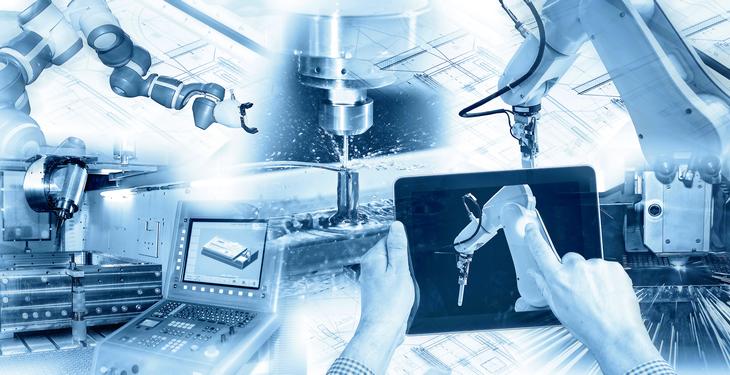Industrial facilities, machinery, critical infrastructure: according to a survey by Longitude Research and Siemens, more than half of business leaders expect them to be controlled by artificial intelligence over the next five years. The responses of over 500 executive managers provide a unique perspective on the future of AI in industrial companies.
Imagine if you could automate some of the day-to-day operational decisions in your organization, so that your employees could focus on strategic projects, like developing new product lines or expanding the business. How good would an AI model need to be, before you give it control? Would it, for example, need to equal the performance of human engineers, or demonstrate better performance? What if an error could cause significant financial losses or even human injury, how would this change your response?
A new survey put scenarios like this to 515 senior leaders from the industrial world (including the energy, manufacturing, heavy industry, infrastructure and transport sectors) as part of research into the uses, benefits, barriers and attitudes towards AI. Their responses offer a unique insight into the future of AI in industrial enterprises.
In these industries, many use cases for AI are expected to help avoid disasters and make workplaces safer. This is important because while AI methodologies are similar across industries, the consequences of failure are not. In many industrial organizations, bad decisions can leave thousands of people without a train to work; millions of dollars can be lost if machinery overheats; slight changes in pressure can lead to an environmental catastrophe; and innumerable scenarios can lead to loss of life.
It is therefore significant that a large set of respondents (44%) believe that, over the course of the next five years, an AI system will autonomously control machines that could potentially cause injury or death. Even greater numbers (54%) believe that AI will, within the same period, autonomously control some of their organization’s high-value assets.
New approaches to data
If AI systems are to make such a decisive leap in terms of responsibility, then they must also make a leap in development. This is often driven by the development of new approaches to how data can be generated, managed, represented and shared.
- Contextual data and simulations Already today we see AI applied to data sets created and organized in new ways to enhance insights and understanding. Examples include knowledge graphs, which capture the meaning of – and relationships between – items in diverse data sets, and digital twins, which provide detailed digital representations and simulations of real systems, assets, or processes.
- Embedded AI and big picture insights Internet of Things (IoT) and Edge technologies are giving rise to diverse machine-generated data sets which can support new levels of situational awareness and real-time insights in the cloud or directly in the field.
- Data from beyond the walls Improved protocols and technologies for sharing data between organizations could support the development of AI models that simultaneously draw from the data of suppliers, partners, regulators, customers, and perhaps even competitors.
To take one example from the above, there is enormous potential in using industrial knowledge graphs to enhance AI models by combining different datasets. “Knowledge graphs add context to the data you’re analyzing,” explains Norbert Gaus, Head of R&D in Digitalization and Automation at Siemens. “For example, machine data can be analyzed in the context of design data, including the tasks the machine is made for, the temperatures it should operate at, the key thresholds built into the parts, and so forth. To this we could add the service history of similar machines, including faults, recalls and expected inspection outcomes throughout the machine’s operational life. Knowledge graphs make it much easier to augment the machine data we use to train AI models, adding valuable contextual information.”
The survey explored the kinds of contextual data that leaders believe would be most useful today. Data from equipment manufacturers came out on top, with 71% rating this as a major or minor benefit. This was followed by internal data from other divisions, regions or departments (70%), data from suppliers (70%) and performance data from sold products in use with customers (68%).
A company that uses knowledge graphs to bring different kinds of data together – such as product history, operational performance, environmental conditions – would be able to create a single AI model that drives better predictions, useful ideas, new efficiencies, and more powerful automation.
Building faith in algorithms
Evermore powerful applications will no doubt raise new challenges. It will require trusting AI with responsibilities that were only ever given to humans. In these cases, AI applications will need to win the confidence of decision-makers, while organizations will need to develop new risk and governance frameworks.
To explore these issues, the survey asked respondents to imagine several scenarios like the one at the start of this article. For example, 56% decided to accept the decision of an impressive AI model over an experienced employee (44%), where the decision would have major financial consequences.
Is 56% high or low? One might think it is low considering respondents were told that the AI model had outperformed the organization’s most experienced employees in a year-long pilot. It suggests that the other 44% could have a bias towards human decisions, even when the evidence favors AI.
Challenges aside, the research suggests an optimistic outlook for AI. As AI grows more sophisticated, leaders expect fewer harmful cyberattacks, easier risk management, more innovation, higher margins, and safer workplaces. Overall, with the promise of such a diverse and important range of positive impacts potentially on the horizon, there will be no shortage of motivation to overcome all challenges on the path to next-gen industrial AI.
